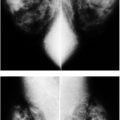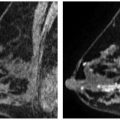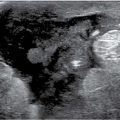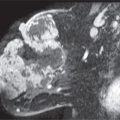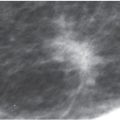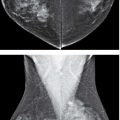LEARNING OBJECTIVES
1. Communication
2. The mammography report
• Required components for reports—report organization
• Assessment categories—BI-RADS
3. The probably benign concept
• Definition of concept
• Appropriate uses of this designation
• Imaging algorithm for patients with a probably benign lesion
• Likelihood of malignancy for different lesion types
4. Patient notification letters
5. Medical audit
• Raw data needed
• Derived data
• Benchmarks
Communication in breast imaging is critical and takes many forms. Direct verbal communication with patients, family members, surgeons, pathologists, radiation and medical oncologists, plastic surgeons, and referring physicians is needed and helpful in optimizing patient care. Start by thinking of patients who present for breast imaging as “your patients.” You are their doctor with respect to breast diseases. This simple acknowledgment brings with it incredible responsibilities. Consider the trust a patient places in you when she presents for screening or diagnostic mammography. I would suggest that this trust is one of the greatest honors anyone of us can be accorded. How do you handle this? Do you hide behind useless disclaimers in reports that say nothing? Do you have others speak for you? Do you see yourself as “just the radiologist”? After you have done a biopsy on a patient because you think she might have breast cancer, when and who discusses the results with her? Does she languish for days or a week or more waiting for the phone to ring? If we abdicate our responsibility to communicate biopsy results directly with patients, who establishes concordance between imaging and histological findings and who determines what the next step should be? Based on the imaging findings, are you involved and advocating for appropriate management of your patients?
The anxiety, concerns, and multiplicity of questions patients bring with them need to be recognized, accepted, and effectively addressed. I encourage direct communication with patients at every step of the process. Educate your patients and involve them in the decision-making process. I encourage residents and fellows to develop what is undoubtedly an art: how to approach patients, make them feel comfortable, and present them with options, recommendations, and results. We need to learn how to recognize when patients are ready to hear what we have to tell them and when it is appropriate to hold back.
In our practice, breast-imaging radiologists see all of our diagnostic patients. We see it as an opportunity to obtain a complete history from the patient with pertinent negatives, examine the patient, and do an ultrasound study if needed. Depending on the mammographic findings, an ultrasound, ductogram, or imaging-guided biopsies may be done. At each step, the radiologist communicates directly with the patient and involves her in the decision-making process. When discussing the need for a biopsy with a patient, I do not specifically mention the likelihood of cancer. I encourage questions and use them to guide me with respect to how in-depth the discussion needs to go. After the biopsy is done, I provide patients my card, which includes my office number, pager number, and email address, should any issues arise before I see them for their follow-up visit. I give them my cell number if I know I will be out of pager range. Immediately before I leave the room, I walk over to the patient, look her in the eye, and ask her if she has any questions for me. Most patients tell me they have no more questions for me. Some will, at that point, specifically ask me if I think what we biopsied is likely to be breast cancer. If it is, I tell them that I am concerned it could be but that we will have definitive results the next day. I take the question as an indication that they are ready to hear the answer. Honesty and direct answers have repeatedly served me well.
Following imaging-guided biopsies, we see most of our patients back the next business day. During the follow-up visit, we examine the biopsy site and, most importantly, discuss the results of the biopsy with her directly. When discussing results with a patient, particularly with a cancer diagnosis, I sit down, try to relax, and look them in the eyes. After giving them the results, I stop for a few minutes and give them time to process the information after which I let their questions again guide my discussion. I will sometimes gently extend a hand and touch their arm or shoulder. A box of tissues is always nearby so, if needed, I do not have to leave the room. In approaching these discussions, I keep in mind the one question I think most patients are considering even if they don’t ask: “Am I going to die?” For many patients, this is immediately followed by another question that they often do not want to ask: “will I lose my breast?” So, I listen carefully for what the patient asks as well as what she does not ask to help guide me in how much information she is prepared to hear. I do not push information unless I think the patient is prepared to hear it. If the patient asks no questions, I refrain from saying anything regarding treatment options. I remind her that she has my card and I am available should she have any questions or if I can help in any way moving forward.
If the patient asks about treatment options, I provide an overview and make it clear that the surgeon will go into specifics and provide more details. I discuss appropriate options applicable to a given patient’s situation. If, for an individual patient, I think one option is medically better suited than others, I provide the patient with my specific recommendation. I view it as my job and responsibility to not only give patients options but to specifically tell them what I think is best given their specific circumstance. Yet, I support and help them regardless of the decision they make. For the patients diagnosed with breast cancer, we make appointments for them for a breast MRI and to see one of our surgical oncologists. These patients leave our center knowing what to expect next, all needed appointments scheduled, and the assurance that we are available to help them through the process. If the biopsy results are benign and congruent with the imaging finding, we return the patient to annual screening.
Unfortunately, over the years, we have tried hard to insulate ourselves from patients by talking about “cases” and using words with implied negative connotations like “complain,” “refuse,” and “deny.” We think of patients who present “describing” or “reporting” a symptom, or “stating” that they have no symptoms related to their breasts and who may “decline” a study or procedure we recommend. I think it is critical not to judge patients and recognize that they are often anxious and scared. Some are angry. It is not for me to judge someone if they have chosen to delay seeking care, but rather to help them once they have come to me for help. If a patient elects to forgo a procedure, I do not slam the door closed because she has chosen not to follow my recommendation, but rather, I leave the door wide open so she can walk back through it when she is ready. They usually come or call back seeking my help.
As clinical breast imagers, we are in a unique position to transition patients through a breast cancer diagnosis. Stop for a moment and consider the path many take: they have a screening mammogram and are otherwise feeling fine. They are called back for further evaluation, undergo a biopsy, and a couple of days later are being told they have breast cancer. Now what? How we handle the communications and help our patients through what can be an overwhelming process is critical. We can make a difference beyond having found an early potentially curable cancer and we should be focused on facilitating the process and advocating for optimal patient management.
THE MAMMOGRAPHY REPORT
As a critical form of communication, the mammographic report needs to be concise, accurate, and directive. It should be clinically relevant. For screening exams, a report with pertinent negatives is used for normal studies and a report stating there is a possible mass or a mass, distortion, or calcifications requiring further evaluation is issued for potentially abnormal studies. Description and characterization of findings is relegated to the diagnostic setting. Time and time again we find that the information available to us on the screening study is limited and may actually be misleading. In our opinion, trying to make definitive statements on a screening study is not optimal. As discussed in Chapter 2, the only assessment categories we use for screening studies are “1” (negative), “2” (benign), and “0” (need additional imaging evaluation or need prior studies for comparison).
In women who are called back for evaluation of a potential lesion on their screening mammogram, we need to first establish whether the lesion is real and, if it is, characterize it and make a decision about the next appropriate step. For a diagnostic exam in a patient presenting with a sign or symptom that may be related to a breast cancer, we need to correlate imaging findings (if any) to the area of clinical concern. This may require one or two mammographic images or an ultrasound and in some patients an imaging-guided needle biopsy. The bottom line: is there a finding that may represent breast cancer? What is the next step? Return to screen? Short-interval follow-up because you can justify that the lesion is probably benign? Or biopsy? On diagnostic studies all assessment categories are used although category “0” is rarely used (when prior studies have not reached our facility ahead of a diagnostic appointment). Our diagnostic reports are succinct in terms of characterizing the finding, describing the location and size, and providing specific recommendations or doing what we think is indicated for the patient.
Before dictating a report, ask yourself: what is clinically relevant? Review films with comparisons (if available) and make a decision as to what you think is going on; provide an appropriate recommendation and direction. Focus immediately on the relevant observations. Do not use the report to make up your mind, as you are describing every inconsequential “ditzel” and benign finding. If you do not have enough information to make up your mind, then do whatever you need to do to get the information. On clinically occult lesions, the radiologist interpreting the mammogram needs to provide guidance and a final recommendation.
Read your reports. Do they make sense? Are they logical and do they follow a logical progression? Or do you jump from one finding to the next or from one breast or axilla to the other? Make every effort to issue reports that are clinically relevant and helpful to the clinician. Eliminate excessive verbiage that is often confusing and can be misleading. Be precise; instead of saying a mass is small or large give a measurement in three planes. The description of a finding goes in the body of the report. The description of the findings needs to support and justify your impression and final recommendation. The impression should be succinct and a repetition of the findings is not appropriate. (Please see Appendix A for tables with ACR BI-RADS® lexicons for mammography, ultrasound and MRI findings).
In organizing your mammography reports provide the information listed in Table 13.1 (1–3). Examples of some of the templates we use for our screening and diagnostic reports are provided in Tables 13.2 and 13.3.
THE PROBABLY BENIGN CONCEPT
In order to demonstrate the viability of this concept, several issues need to be considered: (i) the imaging features of the lesions had to be defined so that lesions could be classified easily; (ii) the lesions placed in this category had to be shown to have low inherent malignant potential; (iii) changes needed to be detectable on follow-up studies; and (iv) it had to be proven that tumors were not upstaged when changes became apparent.
Table 13.1 MAMMOGRAPHY REPORT OUTLINE
Type of study (screening, diagnostic, ultrasound, etc.) |
Reason for study |
Comparison studies |
Tissue type |
Description of findings with pertinent negatives when appropriate |
Location of lesion |
Impression |
Recommendation |
Assessment category (required under the Mammography Quality Standards Act for all mammographic studies) |
• BI-RADS 1: negative • BI-RADS 2: benign • BI-RADS 3: probably benign finding • BI-RADS 4: suspicious abnormality, biopsy is indicated BI-RADS 4A (low suspicion) BI-RADS 4B (moderate suspicion) BI-RADS 4C (high suspicion) • BI-RADS 5: highly suggestive of malignancy; biopsy is indicated • BI-RADS 6: known biopsy-proven malignancy • BI-RADS 0: incomplete, need additional imaging evaluation (or prior studies for comparison) |
Localized findings defined as probably benign include: (i) clusters of small round or oval calcifications; (ii) nonpalpable, noncalcified, round or oval masses with predominantly circumscribed margins regardless of the size of the mass or the age of the patient; (iii) non-palpable focal asymmetry with concave margins and interspersed fat; and (iv) asymptomatic, single dilated duct. Generalized findings described as probably benign include multiple (three or more) similar, randomly distributed findings bilaterally, including (i) multiple masses with circumscribed margins, (ii) small round or oval calcifications in tight clusters, or (iii) scattered individually throughout the breasts.
The probably benign BI-RADS 3 designation is used in the diagnostic setting only. We do not use this BI-RADS on screening studies since characterization of the lesion is required to justify the designation (1,4–11). Calcifications that appear benign on screening images may represent the “tip of the iceberg” with additional unsuspected calcifications and pleomorphic features on magnification views and sometimes those that appear linear and of concern are identified as benign with additional evaluation. Masses that appear to have circumscribed margins on the screening images may have small spiculations and indistinct margins on spot compression and spot compression magnification views. Ultrasound is undertaken because if the mass is a cyst, short-interval follow-up is not appropriate. Lastly, some of the lesions are characterized as benign after additional mammographic images or ultrasound, and short-interval follow-up is not indicated.
This designation is also only appropriate in women who have no prior studies. If the lesion is present on prior studies with no interval change or a decrease in size, a short-interval follow-up adds no additional information. If the lesion has developed or increased in size compared with prior studies, and it is solid on ultrasound, a biopsy is indicated (not short-interval follow-up). Tracking the use of this category as part of the medical audit is useful information and may minimize its abuse.
Table 13.2 SAMPLE SCREENING REPORT TEMPLATES
Stay updated, free articles. Join our Telegram channel

Full access? Get Clinical Tree


